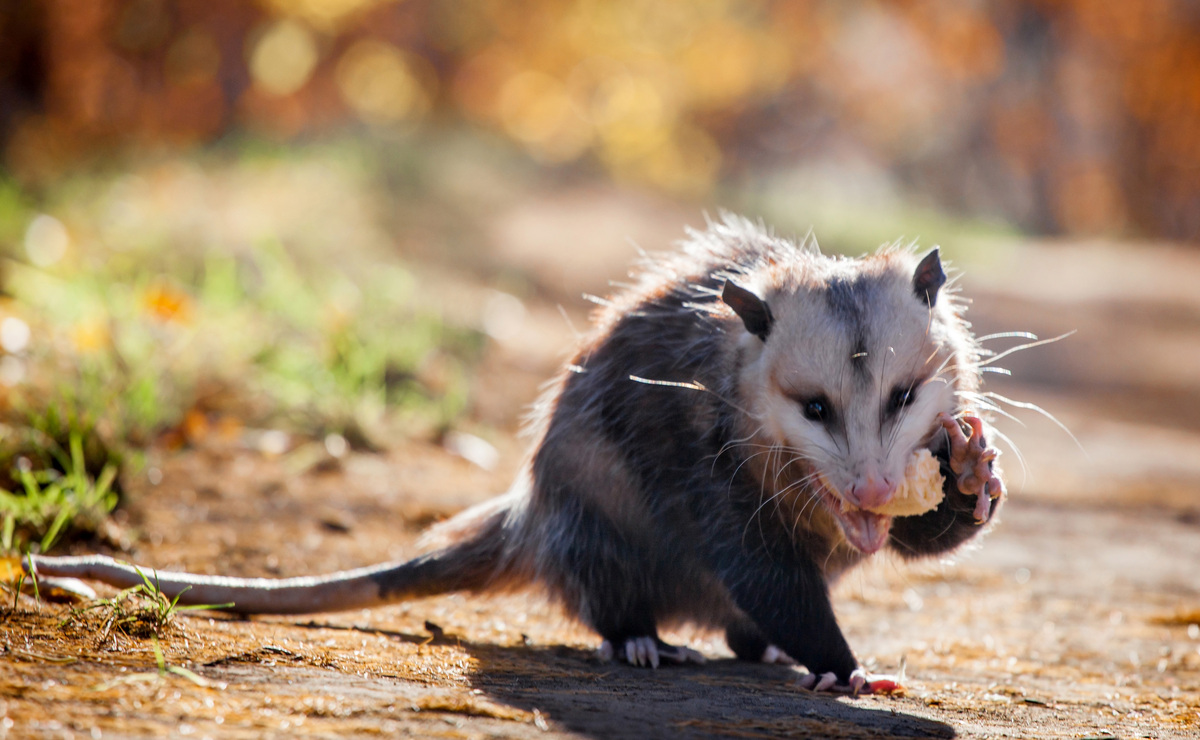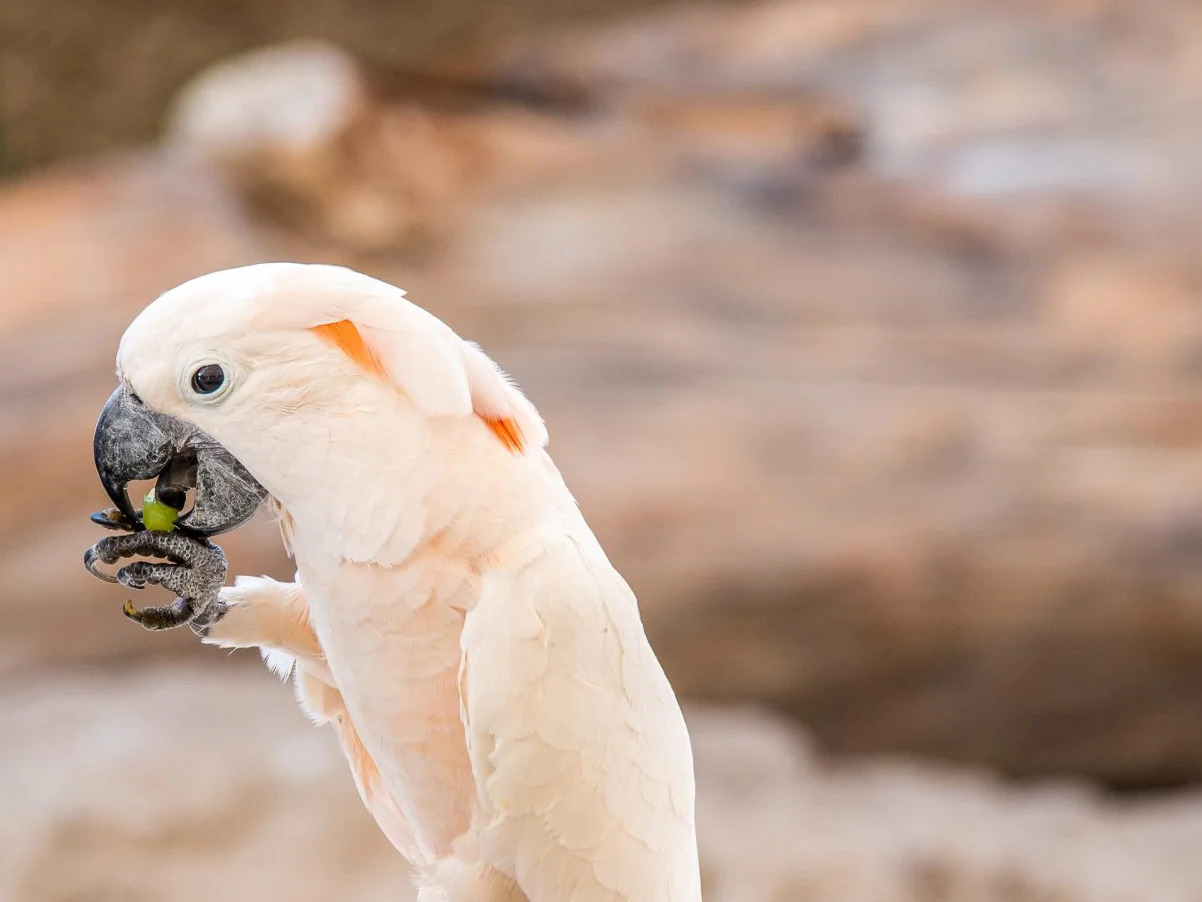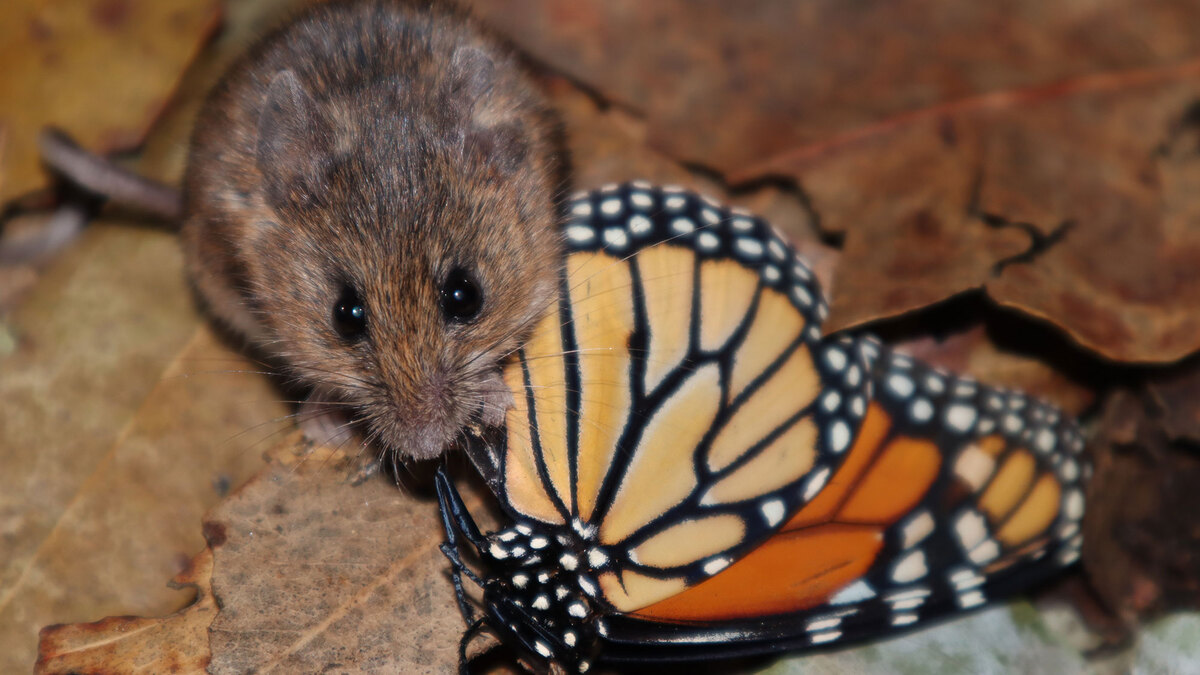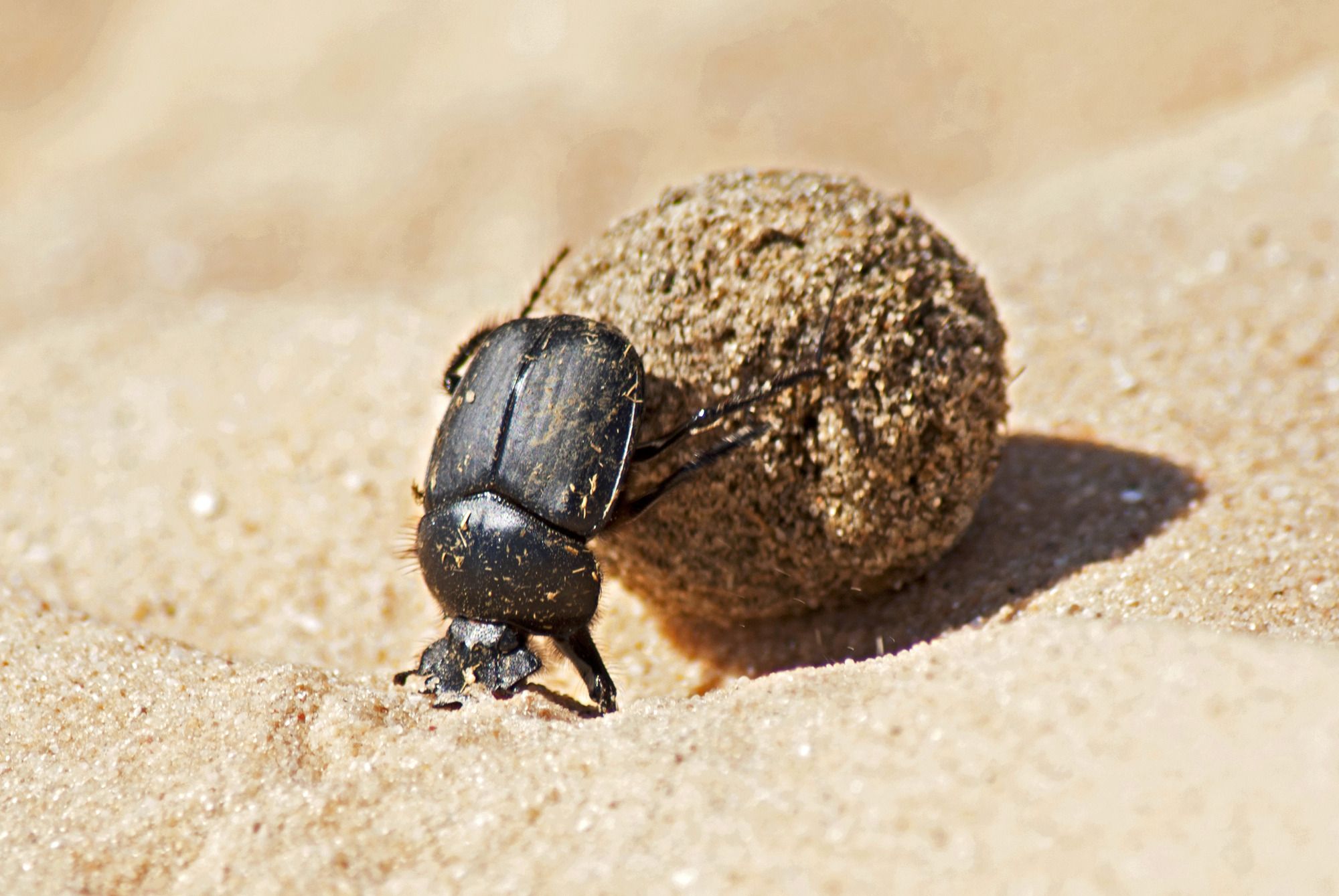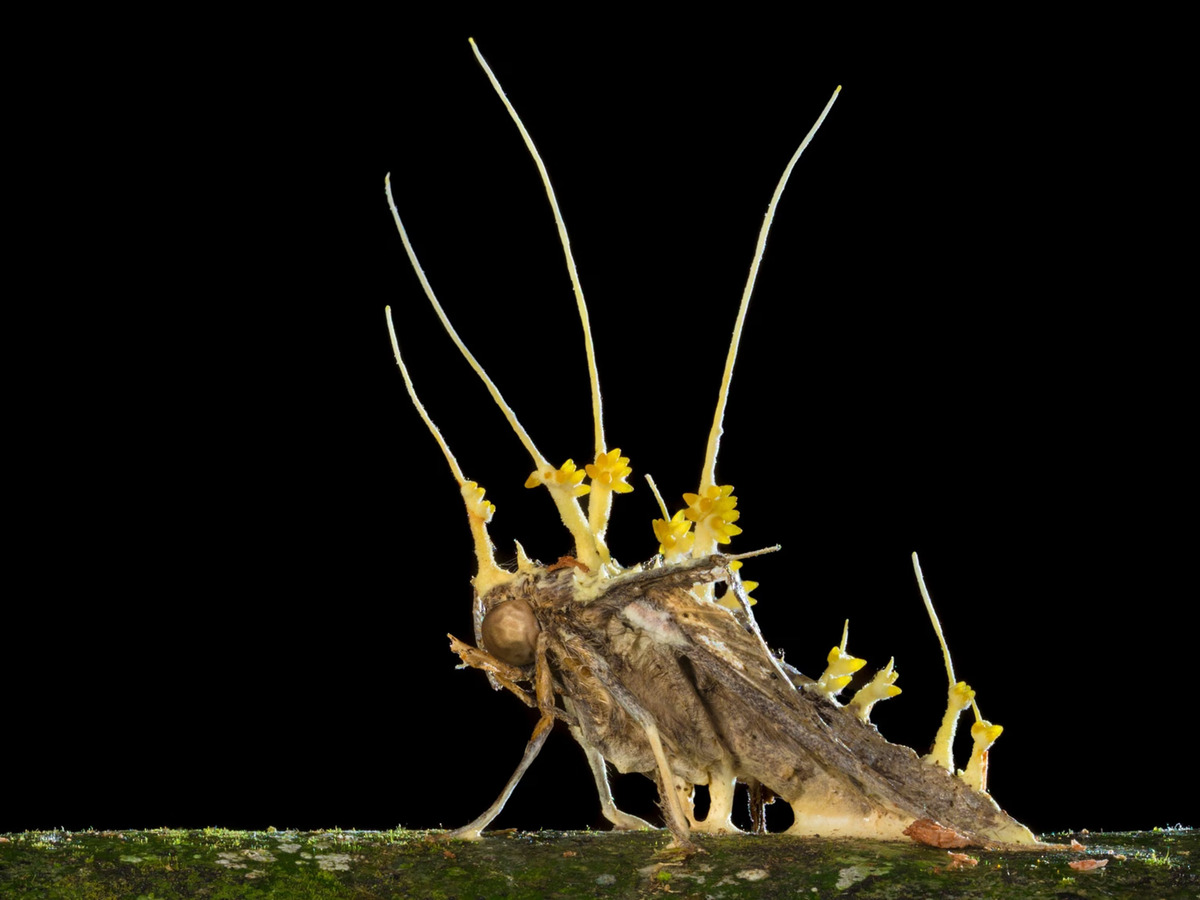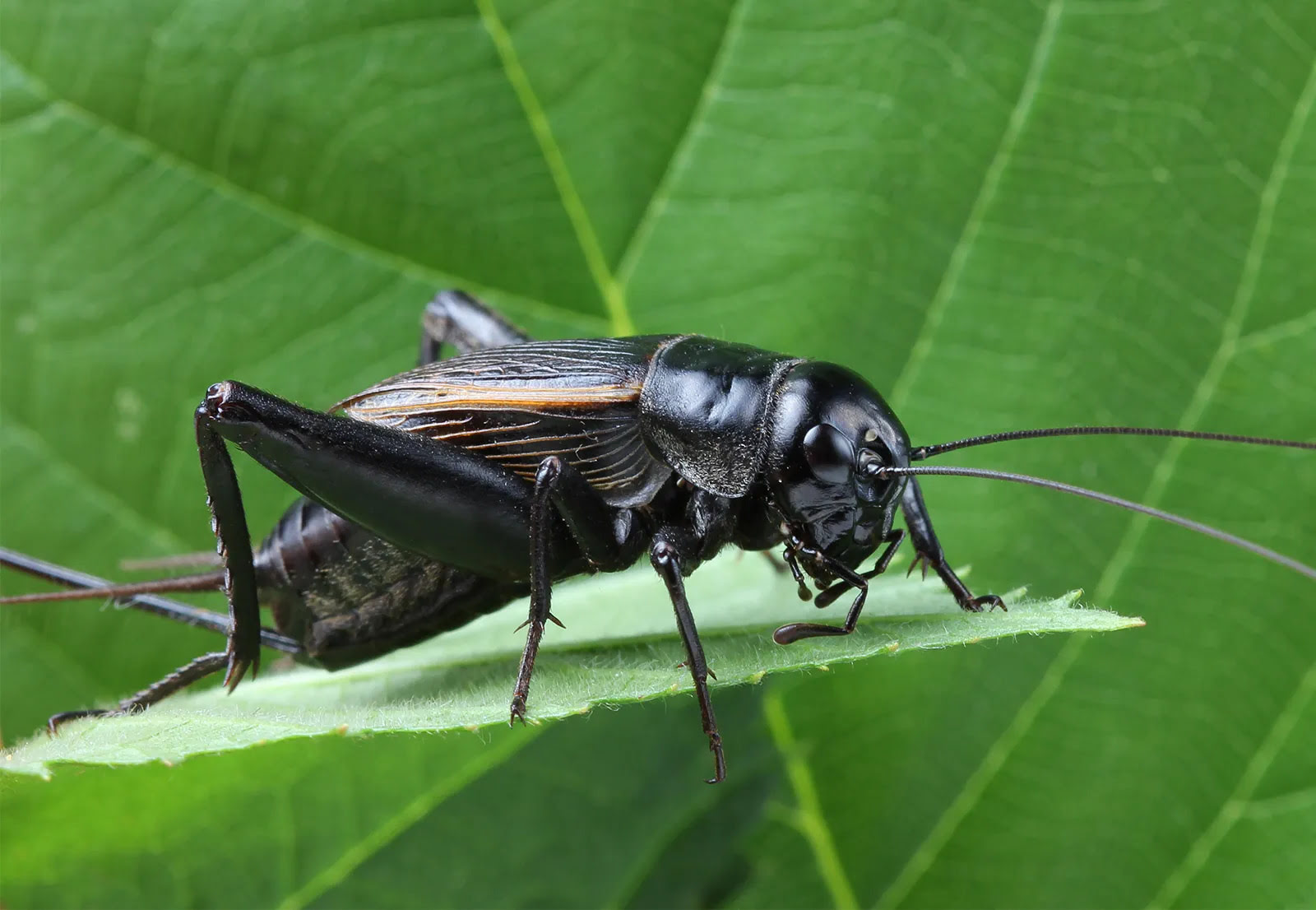Home>Gardening News and Trends>Latest News>What Class Do All Insects Belong
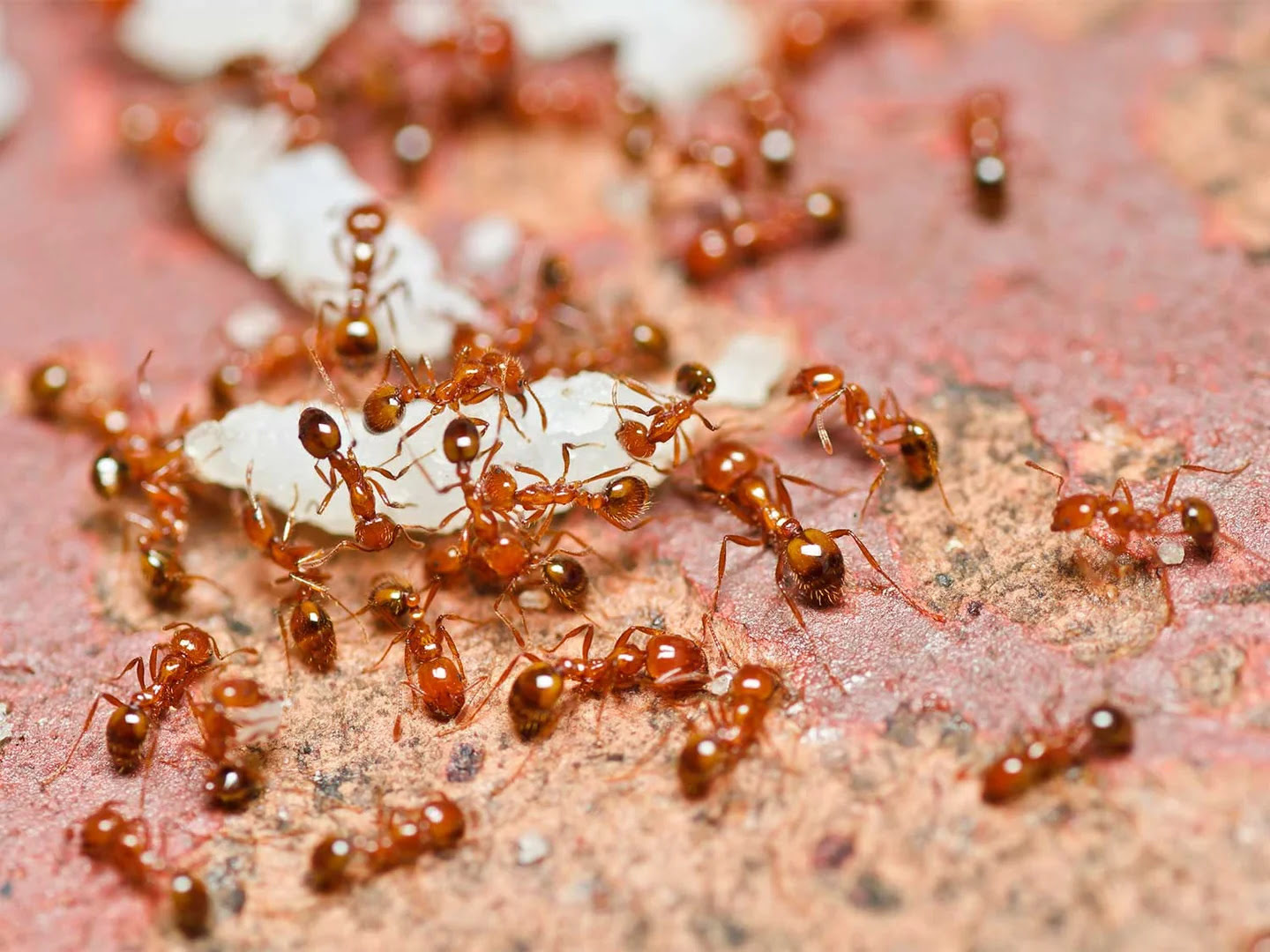

Latest News
What Class Do All Insects Belong
Modified: January 22, 2024
Discover the latest news on the classification of insects and learn which class all insects belong to. Stay informed and keep up with the latest developments in the world of entomology.
(Many of the links in this article redirect to a specific reviewed product. Your purchase of these products through affiliate links helps to generate commission for Chicagolandgardening.com, at no extra cost. Learn more)
Table of Contents
Introduction
Insects are a diverse group of organisms that play a crucial role in our ecosystems. They belong to the class Insecta, which is part of the larger phylum Arthropoda. With over a million known species, insects make up the largest and most successful group of animals on Earth.
From tiny ants to magnificent butterflies, insects can be found in every corner of the world, adapting to various habitats and fulfilling a wide range of ecological roles. They are not only fascinating creatures to study but also have significant impacts on the environment and human life.
While some insects may be considered pests due to their ability to damage crops or transmit diseases, many others serve essential functions. They pollinate plants, break down organic matter, and serve as a food source for numerous organisms higher up the food chain. Their intricate interactions with plants, animals, and other insects contribute to the overall stability and functioning of ecosystems.
The classification of insects is based on several factors, including their anatomical features, life cycle, and behavior. Through this classification, we gain a better understanding of their relationships and evolutionary history.
In this article, we will explore the key characteristics of insects, delve into their diverse roles in ecosystems, and examine the various orders and species that make up the fascinating world of insects. So, let’s take a closer look at these incredible creatures and shed light on the secrets of their success.
Insect Classification
Insects are classified within the phylum Arthropoda, which also includes creatures such as spiders, crustaceans, and centipedes. Within the class Insecta, there are numerous orders that further categorize these small but mighty creatures.
The classification of insects is based on several factors, including their anatomy, metamorphosis type, feeding habits, and other distinctive characteristics. By categorizing insects into various orders, scientists can better understand their evolutionary relationships and study their unique features.
One of the primary factors used in insect classification is their mouthpart structure. Insects can have chewing mouthparts, like beetles and grasshoppers, or sucking mouthparts, like butterflies and mosquitoes. This distinction plays a significant role in determining their feeding habits and ecological role.
Another important characteristic in classifying insects is their wings. Most insects possess two pairs of wings, although some species have reduced or modified wings. The presence or absence of wings, as well as their shape and texture, can be crucial in distinguishing between different orders.
Insect classification also considers the type of metamorphosis they undergo. Some insects experience incomplete metamorphosis, where they go through a series of molts as they grow while retaining a similar appearance throughout their life cycle. Others undergo complete metamorphosis, starting as eggs, then transforming into larvae (caterpillars, maggots, etc.), pupae (in a cocoon or chrysalis), and finally emerging as fully developed adults.
Furthermore, behavior, habitat, and reproductive strategies are also taken into account when classifying insects. Some orders, such as social insects like bees and ants, live in colonies where specific individuals have distinct roles. Other orders exhibit solitary behavior and lead independent lives.
Insect classification provides a framework for understanding the vast diversity of insects and their unique adaptations. By studying their classification, scientists can gain insights into their evolutionary history, behavior, and ecological impact.
Key Characteristics of Insects
Insects possess a wide range of unique characteristics that distinguish them from other organisms. These features contribute to their remarkable diversity and evolutionary success. Let’s explore some of the key characteristics that define insects.
1. Exoskeleton: One of the defining traits of insects is their exoskeleton, a tough external covering that provides support and protection. Composed of a substance called chitin, the exoskeleton protects insects from physical harm and helps prevent water loss.
2. Segmented body: Insects have a segmented body divided into three distinct parts: the head, thorax, and abdomen. This segmentation allows for flexibility and movement, enabling insects to navigate their environment effectively.
3. Three pairs of legs: Insects typically have three pairs of jointed legs attached to their thorax. These legs provide stability, facilitate movement, and play a crucial role in catching prey or gathering food.
4. Antennae: Most insects have antennae, which serve as sensory organs. These delicate appendages allow insects to perceive their environment, detect chemical signals, and communicate with other individuals.
5. Compound eyes: Insects are known for their compound eyes, which are made up of multiple tiny lenses. This eye structure allows them to have a broad field of view, detect movement, and perceive shapes and colors.
6. Metamorphosis: Another key characteristic of insects is their ability to undergo metamorphosis. As mentioned earlier, insects can experience either incomplete or complete metamorphosis, drastically changing in form as they progress through different life stages.
7. Flying ability: Many insects have the remarkable ability to fly. Their wings, powered by strong flight muscles, enable them to navigate through the air and explore vast distances. This evolutionary adaptation has contributed to their widespread distribution and colonization of various habitats.
8. Reproductive versatility: Insects have evolved diverse reproductive strategies. Some species reproduce asexually, while others engage in complex courtship rituals or have elaborate mating behaviors. This reproductive versatility contributes to their ability to adapt and thrive in different environments.
These key characteristics, among others, define the fascinating world of insects. Each characteristic contributes to their ultimate success and ecological importance. Understanding these features allows us to appreciate the incredible adaptations and diversity found within the insect realm.
Role of Insects in Ecosystems
Insects play a vital role in maintaining the balance and functioning of ecosystems. Their presence and activities have far-reaching impacts on the environment, other organisms, and even human life. Let’s delve into the crucial roles that insects fulfill in various ecosystems.
1. Pollination: Many flowering plants rely on insects for pollination. As insects feed on nectar and collect pollen, they inadvertently transfer pollen from one flower to another, aiding in the fertilization process. This mutualistic relationship ensures the reproduction and genetic diversity of plants, leading to the production of fruits, seeds, and the continuation of plant populations.
2. Decomposition: Insects, particularly beetles and flies, play a significant role in the decomposition process. They break down organic matter, such as dead plants and animals, into smaller particles. Through their feeding activities and the digestion of organic material, they contribute to nutrient cycling and the release of essential elements back into the ecosystem.
3. Pest Control: While some insects may be considered pests themselves, many others act as natural pest controllers. Ladybugs, praying mantises, and certain wasp species prey on harmful pests like aphids and caterpillars, helping to control their populations and prevent outbreaks that could damage crops.
4. Nutrient Cycling: Insects, particularly dung beetles and termites, play a pivotal role in nutrient cycling. They feed on and break down organic matter, such as feces or decaying plant material, speeding up the decomposition process. This contributes to the release of nutrients into the soil and facilitates their uptake by plants, ultimately benefiting the entire ecosystem.
5. Food Source: Insects serve as a crucial food source for a wide range of animals, including birds, reptiles, amphibians, and other insects. They form an essential link in the food chain, providing energy and nutrients to predators higher up in the trophic levels. Without insects, many species would struggle to find adequate food resources, leading to cascading effects throughout the ecosystem.
6. Plant Interactions: Insects have developed intricate relationships with plants. Some species, like bees, have coevolved with specific flowers, relying on their nectar and pollen for food. In return, they ensure the plants’ reproduction through pollination. Other insects, such as leaf-cutter ants, serve as gardeners, selectively harvesting plant material to cultivate fungal gardens for food.
Without insects, ecosystems would be dramatically altered, and many ecological processes would be disrupted. They are integral to the functioning and resilience of natural systems. Understanding and preserving their roles in ecosystems is essential for maintaining biodiversity and promoting environmental sustainability.
Insect Diversity
Insects are the most diverse group of animals on Earth, with over a million known species and countless more yet to be discovered. Their incredible diversity is a testament to their adaptability and evolutionary success. Let’s explore the different aspects of insect diversity.
1. Species Richness: Insects make up the largest portion of biodiversity, accounting for more than two-thirds of all known species. From beetles and butterflies to flies and bees, each insect order contains numerous unique species adapted to specific ecological niches and habitats.
2. Habitat Adaptation: Insects can be found in almost every habitat on the planet, from the depths of the ocean to high mountain peaks, and from dense rainforests to arid deserts. They have remarkable adaptations that enable them to survive and thrive in diverse environments, showcasing their incredible diversity across different ecosystems.
3. Body Size: Insects exhibit an immense range of sizes, from tiny parasitic wasps measuring less than a millimeter to the gargantuan Atlas moth with a wingspan of up to 11 inches. This vast size spectrum is a testament to the incredible variations in shape, form, and lifestyle found within the insect world.
4. Ecological Roles: Insects display a wide range of ecological roles within ecosystems. Some species are primary producers, like leaf-mining insects that extract nutrients from leaves, while others are decomposers, breaking down organic matter. Insects can also be predators, prey, or mutualistic partners, highlighting their diversity of interactions and contributions to ecosystem functions.
5. Feeding Habits: Insects have diverse feeding habits, reflecting their ecological adaptations. Some are herbivores, consuming plant material for sustenance. Others are carnivores, preying on smaller insects or even larger vertebrates. There are also omnivorous insects that have a varied diet, allowing them to exploit different food sources.
6. Color and Morphology: Insects exhibit a wide array of colors, patterns, and body shapes. These unique visual characteristics serve various purposes, including camouflage, warning signals, mate attraction, or mimicry. From the vibrant hues of butterflies to the cryptic patterns of stick insects, the visual diversity of insects is truly remarkable.
Studying and understanding the vast diversity of insects is a never-ending endeavor. As scientists continue to discover new species and explore their unique adaptations, we uncover the complex web of life that relies on the contributions of these remarkable creatures. Preserving and conserving insect diversity is essential for maintaining the health and balance of our ecosystems.
Anatomy of Insects
The anatomy of insects is a fascinating subject that reveals their remarkable adaptations and evolutionary history. Understanding their physical structure provides insight into their behavior, ecological roles, and survival strategies. Let’s explore the key anatomical features of insects.
Exoskeleton: The exoskeleton is one of the most distinctive features of insects. It serves as their external skeleton, providing protection, support, and a platform for muscle attachment. Composed primarily of chitin, a tough and flexible substance, the exoskeleton gives insects their characteristic segmented appearance.
Segmentation: The body of an insect is divided into three main segments: the head, thorax, and abdomen. Each segment performs specific functions. The head houses the sensory organs, including the eyes, antennae, and mouthparts. The thorax is responsible for locomotion, containing the muscles and appendages like legs and wings. The abdomen contains organs related to digestion, reproduction, and excretion.
Mouthparts: The mouthparts of insects vary depending on their feeding habits. Some have chewing mouthparts, like beetles and grasshoppers, which are adapted for biting and grinding solid food. Others, like butterflies and mosquitoes, have sucking mouthparts for piercing and sucking fluids such as nectar or blood.
Eyes: Insects typically have two types of eyes: compound eyes and simple eyes (ocelli). Compound eyes consist of numerous individual lenses, each with its own photoreceptor cells. This structure allows insects to detect movement, perceive shapes, and distinguish colors. Simple eyes are usually located between the compound eyes and function primarily in detecting changes in light intensity.
Antennae: Antennae are sensory organs found on the head of insects. They vary in shape and size across different species and play a crucial role in detecting chemical cues, temperature changes, and vibrations. Antennae can help insects locate food sources, find mates, and navigate their environment.
Wings: Wings are another vital feature of insects. Most insects possess two pairs of wings attached to the thorax. The wings can vary in shape and texture, ranging from membranous and transparent to hardened and colorful. Wing structure and flexibility allow insects to fly, escape predators, find mates, or disperse to new habitats.
Respiratory System: Insects breathe through tiny tubes called tracheae. These tracheae extend throughout their body, delivering oxygen directly to cells. Insects do not have lungs but instead rely on a system of valves and air sacs to control the movement of air in and out of the tracheal tubes.
Reproductive System: Insect reproductive systems are diverse, varying between different orders and species. Most insects have separate sexes, with males possessing specialized reproductive structures like claspers or modified genitalia. In some species, females also have ovipositors, which allow them to lay eggs in specific locations.
The intricate anatomy of insects showcases their incredible adaptations to diverse environments and ways of life. These specialized structures allow insects to survive in various habitats, interact with their surroundings, and fulfill their essential ecological roles. Exploring and studying insect anatomy further deepens our understanding of the fascinating world of these remarkable creatures.
Life Cycle of Insects
The life cycle of insects encompasses the transformations and stages that insects go through from birth to adulthood. This cycle varies across different species and is divided into distinct phases, each with its unique characteristics. Understanding the life cycle of insects provides insights into their growth, development, and reproductive strategies. Let’s delve into the key stages of the insect life cycle.
Egg: The life cycle begins when a female insect lays eggs. The number and location of the eggs depend on the species. Insects have evolved various strategies to ensure the survival of their eggs, such as depositing them on leaves, burying them in the ground, or attaching them to a suitable substrate. The eggs contain the genetic material and nutrients necessary for the development of the embryo.
Larva: After the eggs hatch, insects enter the larval stage. Larvae are often distinct from adult insects in terms of their appearance and behavior. They undergo a period of rapid growth and consume large amounts of food to fuel their development. Larvae may have different forms and are adapted to specific ecological niches; for example, caterpillars are the larvae of butterflies and moths.
Pupa: Following the larval stage, many insects enter a stage called pupa or chrysalis. During this stage, dramatic changes occur within the insect’s body as it undergoes metamorphosis. The larval tissues and structures are broken down and reorganized into the adult form. This transformation usually takes place inside a protective casing or cocoon, providing insulation and safeguarding the developing insect.
Adult: The final stage of the life cycle is the emergence of the adult insect from the pupa. The adult insect has fully developed wings, reproductive organs, and other specialized structures required for survival and reproduction. It is during this phase that insects engage in activities such as feeding, mating, and searching for suitable habitats for egg-laying. The lifespan of adult insects can vary significantly depending on the species, ranging from a few days to several months or even years.
It is important to note that not all insects undergo complete metamorphosis. Some, such as grasshoppers and dragonflies, undergo incomplete metamorphosis. In this type of life cycle, the insect progresses through egg, nymph, and adult stages. Nymphs resemble miniature versions of the adult and undergo gradual changes as they molt and grow.
The life cycle of insects is a complex and fascinating journey, demonstrating their incredible ability to adapt and thrive in various environments. Each stage serves a specific purpose in the insect’s development and contributes to its overall ecological role. Understanding the life cycle of insects is essential for ecological research, pest management, and conservation efforts.
Insect Orders
Within the class Insecta, there are numerous orders that classify and categorize the diverse array of insect species. These orders represent distinct groups with shared characteristics, behaviors, and evolutionary histories. Let’s explore some of the major insect orders and their defining features.
Lepidoptera: This order includes butterflies and moths. Lepidoptera is characterized by its scale-covered wings, which give these insects their enchanting and colorful appearance. They undergo complete metamorphosis, starting as eggs, progressing through caterpillar larvae, pupae, and finally emerging as beautifully winged adults.
Coleoptera: With over 400,000 known species, Coleoptera is the largest order of insects. Beetles, which belong to this order, have hardened forewings called elytra that protect their delicate hindwings and bodies. Beetles play various ecological roles, including pollination, decomposition, and pest control.
Hymenoptera: This order comprises bees, wasps, and ants. Hymenopterans have specialized mouthparts for sucking nectar or preying on other insects. They often exhibit complex social behaviors, with many species forming colonies and showing division of labor among different castes. Bees are essential pollinators, and certain wasps provide natural pest control services.
Diptera: Diptera is the order of flies and mosquitoes. These insects possess a single pair of wings, with the hindwings evolving into tiny knob-like structures called halteres, which aid in flight stability. The mouthparts of Diptera are adapted for piercing and sucking fluids. They play various roles in ecosystems, such as pollination, decomposition, and serving as food sources for other organisms.
Orthoptera: Orthopterans include grasshoppers, crickets, and katydids. These insects have powerful hind legs adapted for jumping and specialized structures on their wings for producing sound. Orthoptera species undergo incomplete metamorphosis, with nymphs resembling miniature adults. They are known for their distinctive calls and contribute to nutrient recycling through herbivorous feeding habits.
Hemiptera: Also known as true bugs, Hemipterans have specialized mouthparts for feeding on plant sap or other fluids. This order includes aphids, cicadas, and leafhoppers. Some Hemiptera species are pests, damaging crops by sucking plant juices, while others serve as important pollinators or contribute to nutrient cycling.
These are just a few examples of the numerous insect orders that exist. Each order possesses unique characteristics, adaptations, and ecological roles. Through the study of insect orders, scientists gain insights into the diversity, relationships, and evolutionary history of these incredible creatures.
Common Examples of Insect Species
The world of insects encompasses a vast array of species, each with its own unique characteristics and adaptations. Let’s explore some common examples of insect species that exemplify the diversity and ecological significance of these fascinating creatures.
Honey Bee (Apis mellifera): Honey bees are highly social insects known for their complex hive structures and crucial role in pollination. They are responsible for the pollination of many crops and the production of honey. Honey bees live in large colonies, with a queen, drones, and worker bees each fulfilling specific roles.
Monarch Butterfly (Danaus plexippus): Monarch butterflies are famous for their remarkable long-distance migrations. These brightly colored insects undergo complete metamorphosis, with striking larvae known as caterpillars. Monarchs are an iconic symbol of the importance of butterfly conservation and the beauty of insect diversity.
Ladybird Beetle (Coccinella septempunctata): Ladybird beetles, also known as ladybugs, are well-known for their distinctive spotted appearance. They are beneficial insects, feeding on aphids and other small pests, making them valuable for biological control in gardens and agricultural settings.
Housefly (Musca domestica): Houseflies are common insects found worldwide and are known for their rapid reproductive rate. While considered pests due to their association with unsanitary conditions, houseflies play a role in nutrient cycling as decomposers, breaking down organic matter and aiding in the recycling of nutrients.
Ant (Formicidae): Ants are highly social insects that live in colonies, exhibiting complex social organization and division of labor. They are known for their impressive communication systems, intricate nest-building behaviors, and diverse ecological roles, including seed dispersal, pest control, and soil aeration.
Dragonfly (Order Odonata): Dragonflies are predatory insects known for their agile flight and large compound eyes. They are powerful hunters, feeding on other insects, and are essential in maintaining balance within ecosystems by controlling populations of mosquitoes and other small insects.
Grasshopper (Order Orthoptera): Grasshoppers are herbivorous insects famous for their ability to leap great distances thanks to their strong hind legs. They undergo incomplete metamorphosis, with nymphs resembling miniature versions of adults. Grasshoppers play essential roles in ecosystems as herbivores and a food source for many predators.
Mosquito (Family Culicidae): While mosquitoes are often associated with nuisance biting and disease transmission, they serve ecological roles as pollinators and food sources for various organisms. Only female mosquitoes bite, requiring blood for the development of their eggs.
These are just a few examples of the vast and diverse world of insect species. Each species plays a unique role in ecosystems, highlighting the importance of preserving and understanding their contributions to the natural world.
Conclusion
Insects are an extraordinary group of organisms that dominate our planet in terms of diversity, numbers, and ecological impact. With their unique adaptations, behaviors, and evolutionary success, insects play crucial roles in maintaining the balance and functioning of ecosystems worldwide.
From the tiny, industrious ants to the magnificent, delicate butterflies, insects showcase a remarkable range of adaptations and behaviors. They possess key characteristics such as exoskeletons, segmented bodies, and specialized mouthparts, allowing them to thrive in various habitats and fulfill specific ecological roles.
Insects serve vital functions in ecosystems, such as pollination, decomposition, nutrient cycling, and pest control. They are essential for the survival of numerous plant species, contributing to the development of fruits, seeds, and the continuation of plant populations. Insects also play an integral role in the food chain, serving as a crucial food source for other organisms.
The classification of insects into different orders helps us understand their relationships, diversity, and evolutionary history. Each order represents a distinct group with shared characteristics and behaviors, contributing to the vast insect biodiversity across the globe.
Exploring the anatomy, life cycles, and examples of common insect species further deepens our appreciation for these incredible creatures. We gain insights into their adaptations, ecological roles, and the interconnectedness of all living organisms within ecosystems.
Preserving insect diversity and understanding their ecological importance is crucial for maintaining the health and balance of our ecosystems. Insects face numerous challenges, including habitat loss, climate change, and the use of pesticides. Conservation efforts and sustainable practices are vital in protecting these remarkable creatures and the vital services they provide.
As we continue to unravel the wonders of insects, their intricate relationships, and their impact on our planet, it becomes clear that they are not just small creatures to be brushed aside, but rather masters of adaptation and crucial contributors to our natural world.


